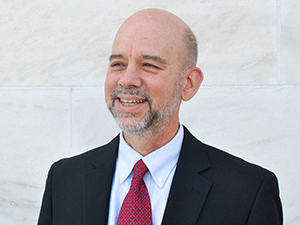A bipartisan Senate bill would accelerate a shift in the Conservation Reserve Program toward grasslands and smaller, environmentally sensitive parcels and away from the larger tracts that have been traditionally enrolled through the general signup process.
The CRP Reform Act, introduced by Senate Agriculture Committee members Chuck Grassley, R-Iowa, and Cory Booker, D-N.J., would boost acreage caps for both the continuous signup and grassland portions of CRP and also increase payments for continuous CRP enrollment from 90% to 110% of average county rental rates.
Payment rates for general signup acreage would be cut from 85% to 75% of average rental rates.
General CRP focuses on retiring whole fields from production for 10- to 15-year periods, while continuous CRP targets smaller parcels through practices like buffers and filter strips. Grassland CRP allows farmers to graze the land they enroll, which can only be done in “emergency” conditions under rules of the general signup.
The bill also would reduce the overall acreage cap on CRP from 27 million acres to 24 million acres.
Some 23 million acres are currently enrolled in CRP — 8.4 million under the general signup, 8.2 million under the continuous signup and 6.4 million in the grasslands program.
Ferd Hoefner, a policy consultant who was the longtime policy director for the National Sustainable Agriculture Coalition, told Agri-Pulse the shift Grassley and Booker are proposing has been "a long time coming." The number of new acres enrolled in both the grasslands and continuous programs has been steadily increasing in recent years, while general CRP enrollment has declined, according to numbers compiled by researchers at the University of Illinois.
 Ferd Hoefner
Ferd Hoefner"It’s been a slow evolution leading in that direction, and I think we’re basically there,” Hoefner said.
Grassley told reporters Tuesday that he believes focusing on continuous CRP instead of general CRP will help increase the amount of land available for agricultural production, while still allowing farmers to enroll land around waterways and the edges of fields in the program. He said he also has concerns that current general CRP rental rates make it harder for new and beginning farmers to find land to purchase.
“General CRP competes with new and beginning farmers,” Grassley told reporters. “That’s a factor we’ve got to take into consideration.”
Jim Inglis, the director of governmental affairs for Pheasants Forever and Quail Forever, says he supports the idea of increasing incentives for enrollment in continuous CRP. But he said he worries about reducing general signup payment rates, which were capped at 85% of the average county rental rate in the 2018 farm bill.
Inglis said reducing general CRP payments would hurt producers in places that have traditionally enrolled in the program. Producers in the southern Plains and West, in particular, have already expressed concern about the sufficiency of payments they are offered through the general signup.
Don’t miss a beat! It’s easy to sign up for a FREE month of Agri-Pulse news! For the latest on what’s happening in Washington, D.C. and around the country in agriculture, just click here.
“I think that could really leave out some of the areas of the country that really depend on general CRP,” Inglis said.
Hoefner, on the other hand, said he sees a decline in general CRP enrollment as a positive thing. Growth in continuous and grasslands CRP acreage allows farmers to use more of their land for grazing or production, he said.
“I think it’s good for farmers, it’s good for production, and it’s really good for water quality and climate," he said.
Grassley said that reducing the overall acreage cap in CRP to 24 million acres is intended to make more land available for production.
Aviva Glaser, the senior director of agricultural policy for the National Wildlife Federation, told Agri-Pulse that she feels this would take the program in the wrong direction. The CRP acreage threshold peaked at 36.7 million in 2007 and has fallen since.
“Twenty-seven million is already lower than what we feel is needed on the landscape to support wildlife populations,” Glaser said. “So capping it at 24 million acres — that’s the wrong direction.”
Sens. John Thune, R-S.D., and Amy Klobuchar, D-Minn., are also aiming to make some changes to the CRP program. They introduced the Conservation Reserve Program Improvement Act earlier this year, which would increase the annual CRP payment limitation from $50,000 to $125,000. The current payment amount was set in the 1985 farm bill, which created the program.
The bill would also provide cost-share for producers to add grazing infrastructure on CRP contracts, if grazing is included in the approved conservation plan and reinstate mid-contract management cost-share payments for activities not related to haying or grazing.
Inglis said the changes would help better support producers that enroll in the program.
“We’re asking these farmers and ranchers to enroll in these practices, but we’re not fairly compensating them with rental rates and with cost share,” Inglis said. “They’re shouldering the burden to implement the practices that really has broad environmental benefit or ecological services to all of us.”
For more news, go to www.Agri-Pulse.com.


